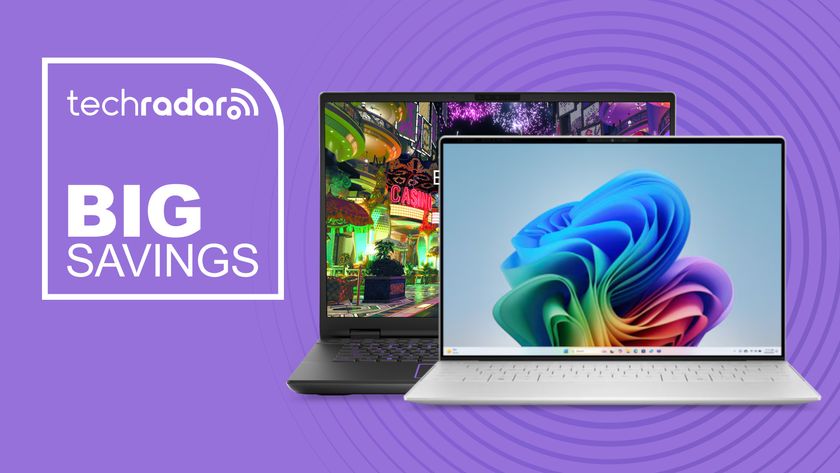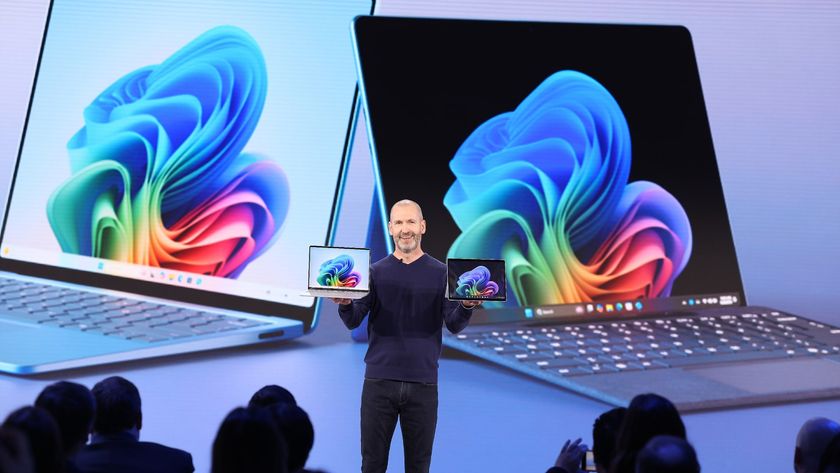Interview: Asus CEO Jerry Shen
Asus boss talks about the future of Eee PC
In 2007 when Apple launched the MacBook Air, it created a lot of media attention. So this year Asus plans to launch the Fold/Unfold, not following with tradition, to create a similar momentum.
TR: So it is like a more affordable and economical PC version of the MacBook Air?
JS: Yes. Have you seen the pre-production prototype of the Fold/Unfold? [Assistant fetches in the mock-up prototype]. As you see it is pretty… different!
TR: It is certainly different. It's a real departure, design wise. So this is definitely going to be available to consumers in time for Christmas 2009?
JS: It will be available around September or October time later this year.
TR: What about the selling price?
JS: The end-user price will be somewhere between $1000 and $1500.
Get daily insight, inspiration and deals in your inbox
Sign up for breaking news, reviews, opinion, top tech deals, and more.
TR: So you think this will have a similar impact on the market to that of the original Eee PC back in 2007?
JS: Yes, because it is something different, exciting and original. Just as with the 'Seashell' Eee PC 1008 also, we are offering a new polymer battery offering up to five hours battery life.
TR: Will Asus' netbooks ship with Windows 7 later this year, as soon as Microsoft's new OS is finally released?
JS: That's dependent on Microsoft's schedule. But for sure, with the touch product – the Eee T91 – and for the other new Eee PC products, we are already testing with Windows 7.
TR: Netbooks are getting much better graphics capabilities – do you think we will soon be able to play proper 3D videogames on netbooks?
JS: The Eee PC graphics chips are from AMD or Nvidia – so we do not really experiment with those - but we will work with Intel to see how we can advance those technologies.
TR: What about that dual screen concept PC that you have been showing at CeBit?
JS: For the dual screen concept there are two parts – it can work as a dual-screen monitor or it can work with one screen acting as a [touchscreen] keyboard. The trigger idea was that there are often times when you need a bigger screen or more screens. Like in an investment bank, for example, they have so many screens!
This concept is still in development. We are still trying to see if we can make people understand this concept easily. So right now it is my priority to keep working on this concept. OLED is still very expensive. And when you touch a normal keyboard, you feel it. But if we use a touchscreen keyboard, there is no response. You can maybe use the voice for input, but this is still something we need to work on before it is commercialised. So this will not launch this year. This one [indicates Fold/Unfold prototype] will launch this year.
TR: That takes me onto one interesting point your Chairman made in his CeBit 2009 presentation – he mentioned that Asus wants to see 'the end of the keyboard' and that you want to implement speech recognition.
JS: Oh for sure. Actually, internally we have one team dedicated to studying voice recognition. Touch and gesture input is universal, whereas language is not universal. The first Eee PC or Eee Top products implementing voice-recognition and features will be ready by Q3/Q4 2009 – with our dedicated development team working with third parties in both Japan and the US and reporting directly to me. So this is something we will see very soon, later this year.
TR: Asus' new Skype videophone device is a bit of a departure for you. Tell us more about that.
JS: With this machine, Skype asked us to really focus heavily on the voice quality – from the speakers on the device – which we have tuned to offer great quality. I installed one in my house and another one in the US, so I use the machine to have video conferences.
TR: So how will this be marketed? Who do you think will buy this?
JS: I will buy one for my mother in the south of Taiwan and one for my house so I can have videochats with her easily. So we plan to sell them in pairs. It is very easy to use, even for a non-PC user. For this first generation one, we have just used traditional buttons. For the second generation Skypephone we plan to implement a touchscreen, which we should bring out later this year.
TR: So with these types of developments in VoIP technologies [for casual and non-PC users] do you think we might we see the end of the traditional cellphone in, say, three to five years down the line?
JS: Traditional phone companies are threatened because Skype threatens their profits. As for our plans, we want to develop these products in such a way to keep the costs down and make them even more affordable in the future.













